Feature Identification Exercises
Print Version
Case Example 2: South Dakota
South Dakota Imagery
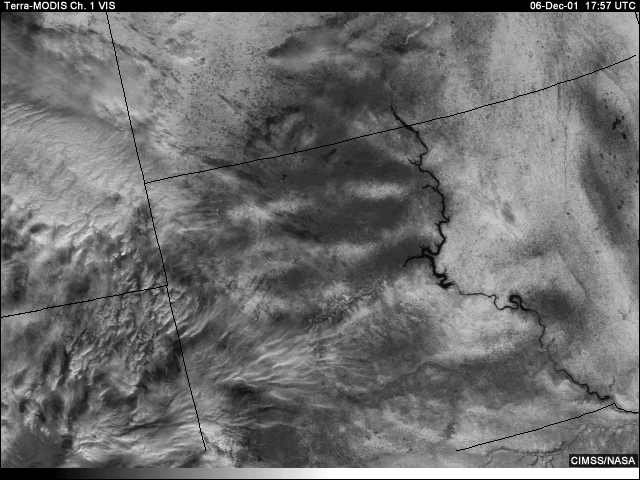

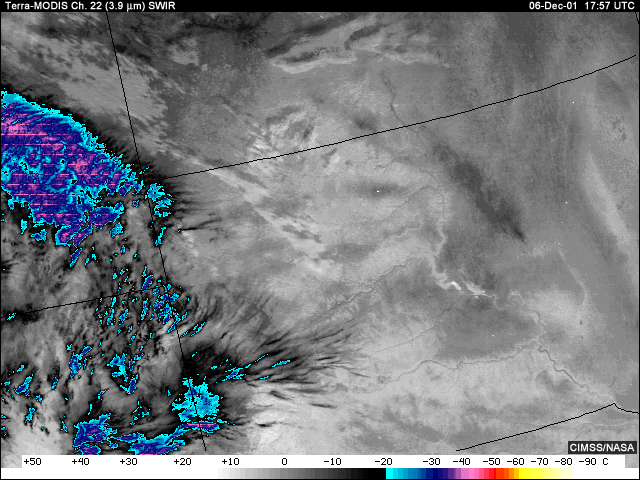
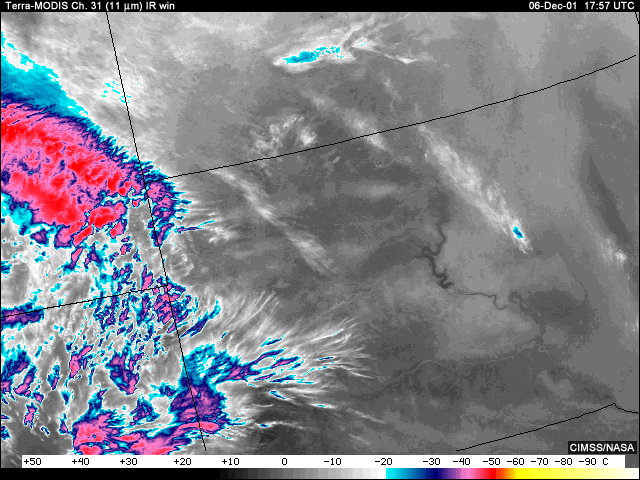
Page 1: Introduction
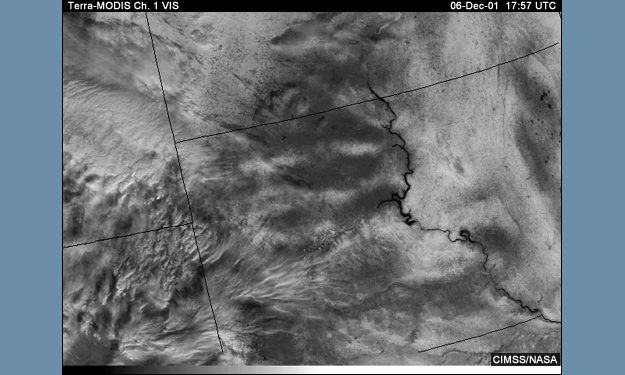
The visible channel for this scene hints at a complex mixture of clouds and different surface types including bare and snow-covered ground.
Page 2: Identification Task: Identifying Clouds vs. Snow Cover
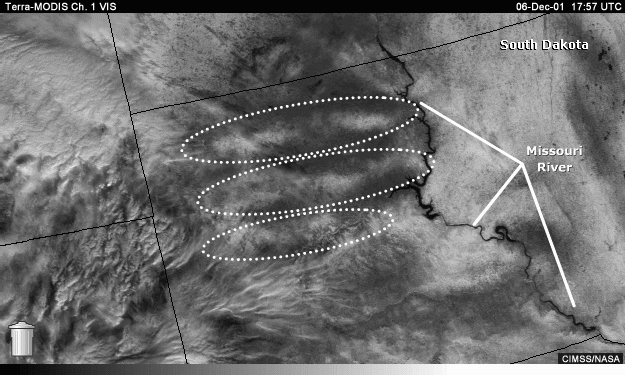
Focusing on the region west of the Missouri River over western South Dakota and the brighter west-to-east oriented patches, we see what may be either patchy areas of snow cover, clouds, or a combination of both indicated on the image. Determine if the indicated areas contain snow cover, clouds, or a combination of both.
Hints:
The bright features look like either clouds or snow cover.
The properties of the shortwave infrared channels should then help you determine whether the river-like feature is snow or cloud covered.
The 11-micrometer channel adds little useful information. It indicates that the patchy areas in question are associated with cooler brightness temperatures, which could in turn imply either cloud or a relatively colder, possibly frozen surface.
Answer:
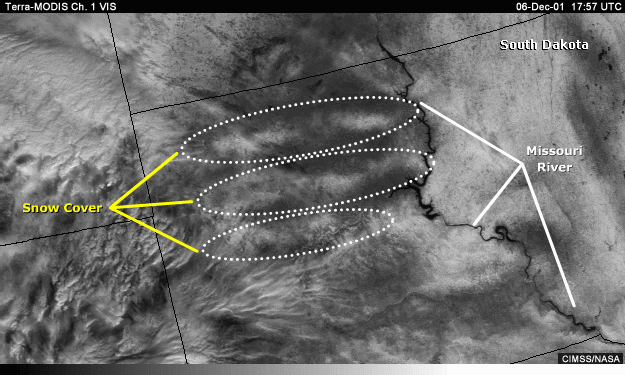
Closer examination indicates that these features are patches of snow cover rather than clouds. Based on
the brightness of the patches in question, visible imagery tells us that we are looking at either cloud or
snow on the ground.
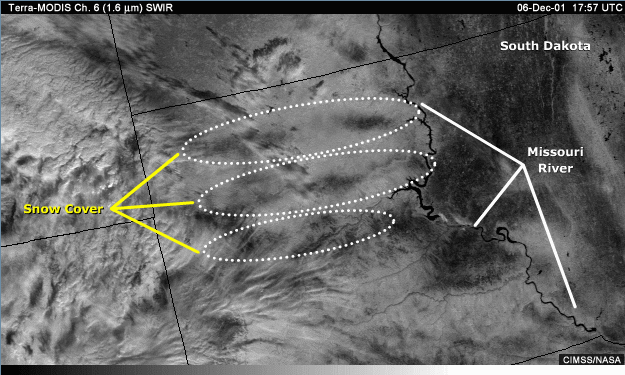
The same features in the 1.6-micrometer image appear relatively dark, something we would expect of a snow or ice covered surface.
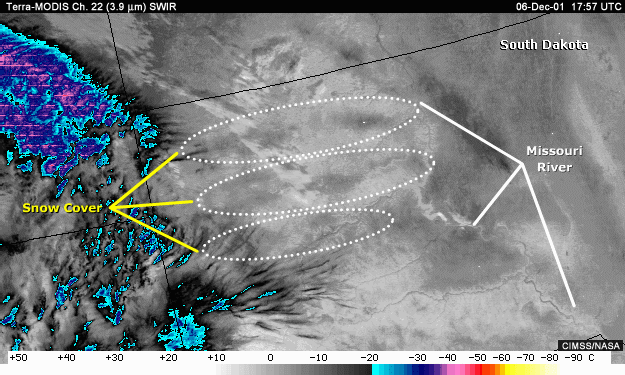
Notice that the patches appear relatively dark in the 3.9-micrometer image, which would be typical of snow or ice cover.
Page 3: Identification Task: Locating Clouds
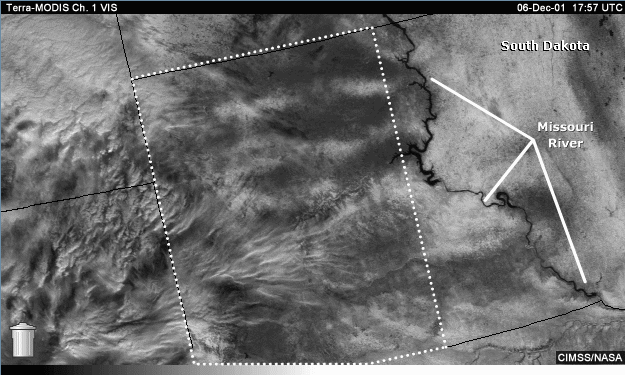
Look at the indicated area western South Dakota for areas of cloud cover.
Hints:
Visible and 1.6-micrometer channels in combination help distinguish clouds from potential snow-covered surfaces.
3.9- and 11-micrometer channels may be useful in identifying high cold cloud tops associated with cirrus.
Answer:
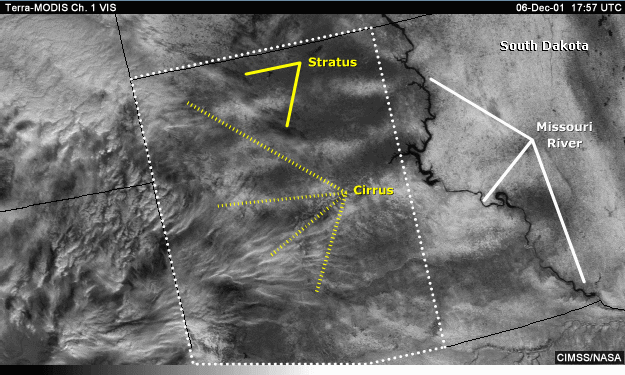
The visible channel image indicates the presence of clouds, snow cover, or a combination of both
scattered across western South Dakota. The finer texture noted in the brighter features over southwestern
portions of the state may be indicative of cirrus, and the darker features in the northwest may be associated
with cloud shadows. This is difficult to confirm, however, without additional information.
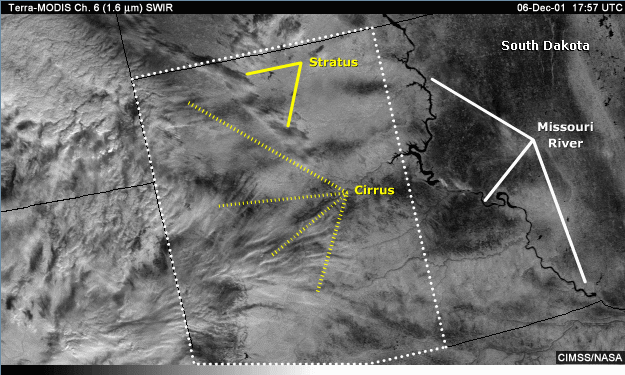
Looking at the 1.6-micrometer channel, we begin to see that the same streaks that appeared bright in the visible also appear reflective and relatively bright here. This confirms the likelihood that these features are indeed clouds. Some patchy cloud cover is also strongly indicated across the northwestern portion of the state. The 1.6-micrometer channel shows the higher reflectivity associated with clouds at this wavelength, and cloud shadows become even more apparent.
Page 4: Identification Task:
Determining Cloud Phase and Cloud Height
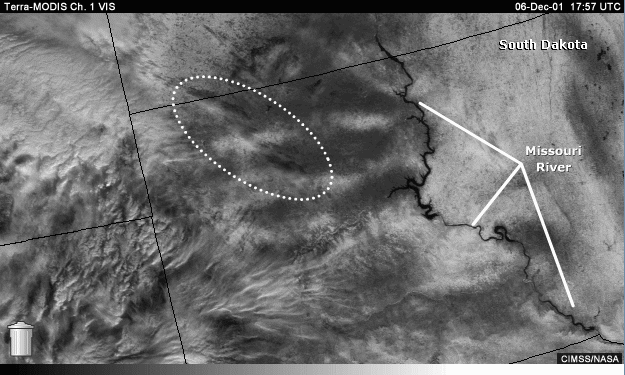
Identify clouds in the indicated area as either water or ice clouds and characterize their height as high, medium, or low.
Answer:
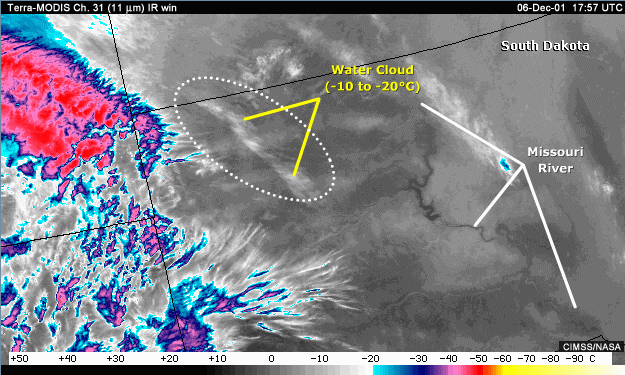
The associated 11-micrometer channel brightness temperatures range between minus 10 and minus 20 degrees
Celsius. Within this temperature range, cloud phase may consist of supercooled water, ice, or a mixture of the
two.
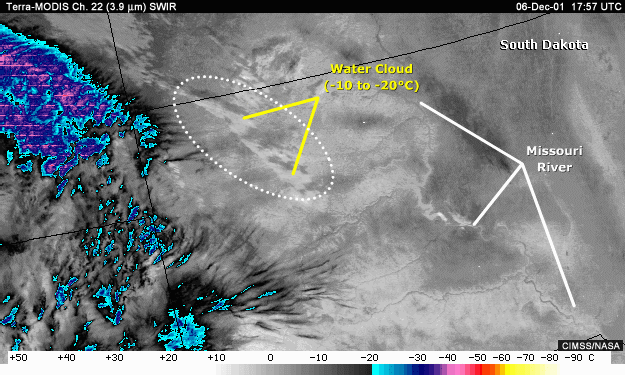
Most of the ambiguity concerning cloud phase is eliminated when we look at the 3.9-micrometer imagery. At 3.9 micrometers, these clouds appear relatively bright/warm and reflective, which indicates the presence of liquid water droplets. Ice clouds would appear dark/colder and poorly reflective. Given that supercooled water droplets are present and that wintertime conditions prevail, we can be reasonably confident that these clouds are present at relatively low levels.
South Dakota Summary
· Visible and 1.6-micrometer imagery is an effective combination
in the detection of
clouds for complex scenes containing a mixture
of clouds, snow, and bare ground
· The 3.9-micrometer channel helps determine cloud phase
(liquid vs. ice), while the
11-micrometer channel can help
detect thepresence of supercooled water
· 11-micrometer imagery is able to isolate cold features associated
with high clouds and
relatively cold spots on the ground associated
with patchy snow cover
· The 3.9- and 11-micrometer channels are useful for identifying
high cold cloud
topsassociated with cirrus